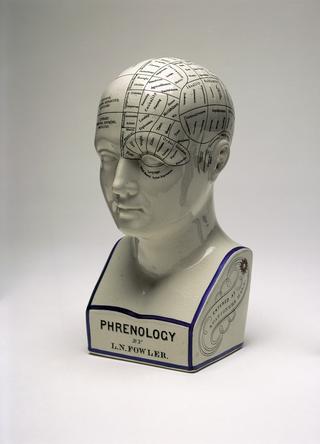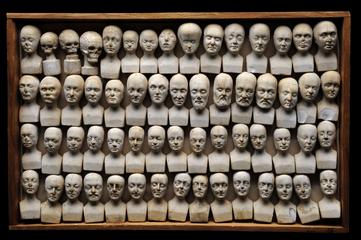














Plaster head on circular stand, representing executed French criminal Lacenaire, collected by Dr. Gachet, probably for phrenological use, French, 1821-1890.
Pierre Francois Lacenaire (1800-36) was a notorious French killer. He was executed by guillotine in March 1836. A plaster copy was made of his head after his death. This was collected by Dr Gachet (1828-1909), who specialised in the emerging field of psychiatry. Gachet was also a patron of the arts, becoming a close friend of Vincent van Gogh (1853-1890) and later his physician.
During the 1800s, plaster heads of executed criminals were used for an emerging field of study called phrenology. Phrenologists believed the shape and size of areas of the brain (and therefore the overlying skull) determined personality. This meant criminals such as Lacenaire made interesting subjects. Faint pencil markings can still be seen on this plaster head. The areas outlined relate to ‘secretiveness’ and ‘destructiveness’. These areas of the skull were believed to be prominent in murderers and criminals. However, he was unusually well educated and a published poet. His story intrigued the public and inspired a character in Dostoevsky’s novel ‘Crime and Punishment.’
Heads like this were often part of larger phrenological reference sets which included famous people and ethnographic examples.
Details
- Category:
- Psychology, Psychiatry & Anthropometry
- Collection:
- Sir Henry Wellcome's Museum Collection
- Object Number:
- A158246
- Materials:
- plaster
- Measurements:
-
overall: 375 mm x 170 mm x 220 mm,
base: 180 mm,
- credit:
- Gachet, Dr.




